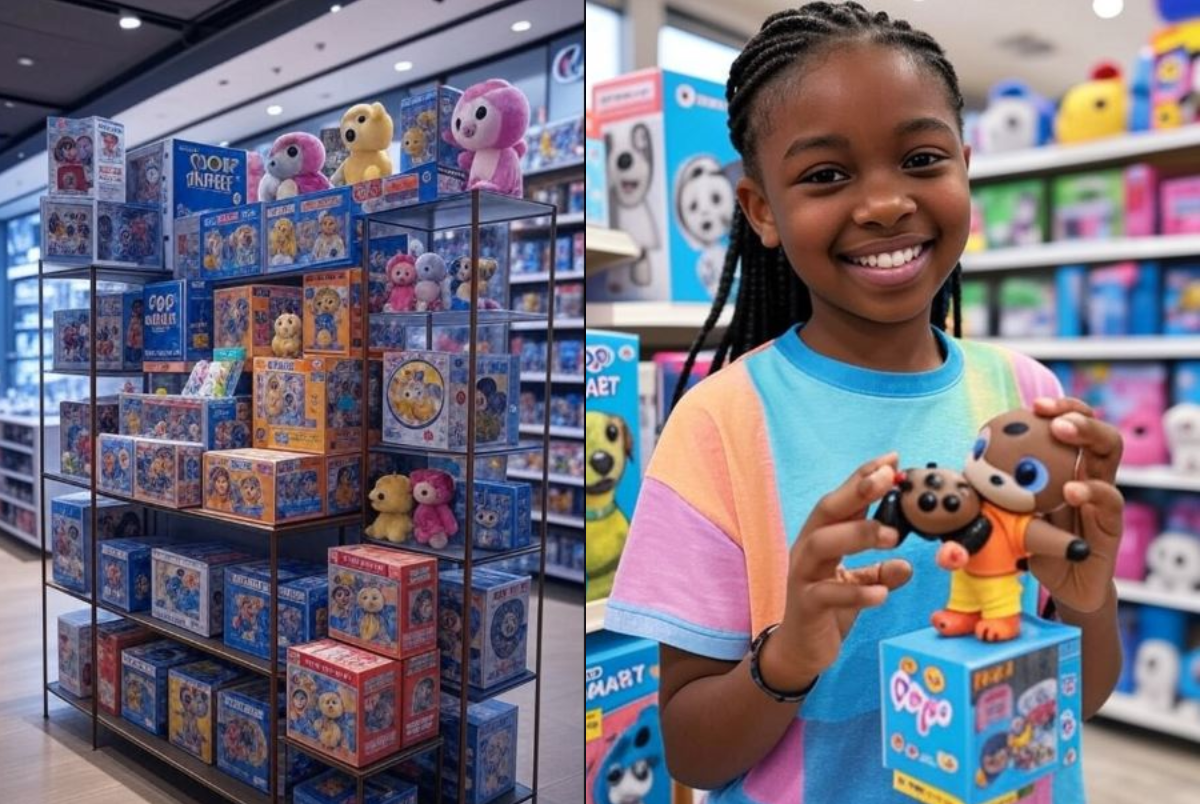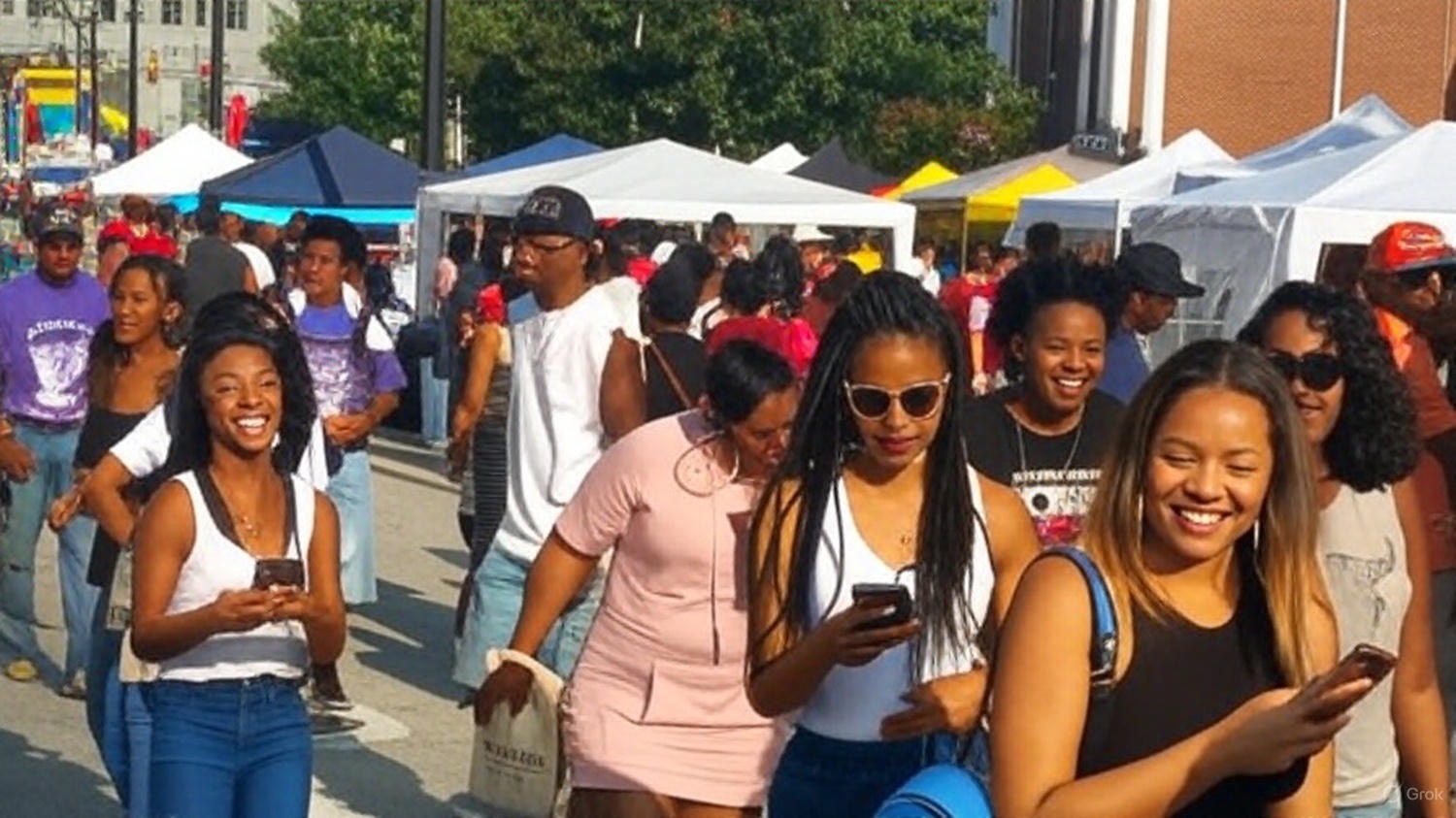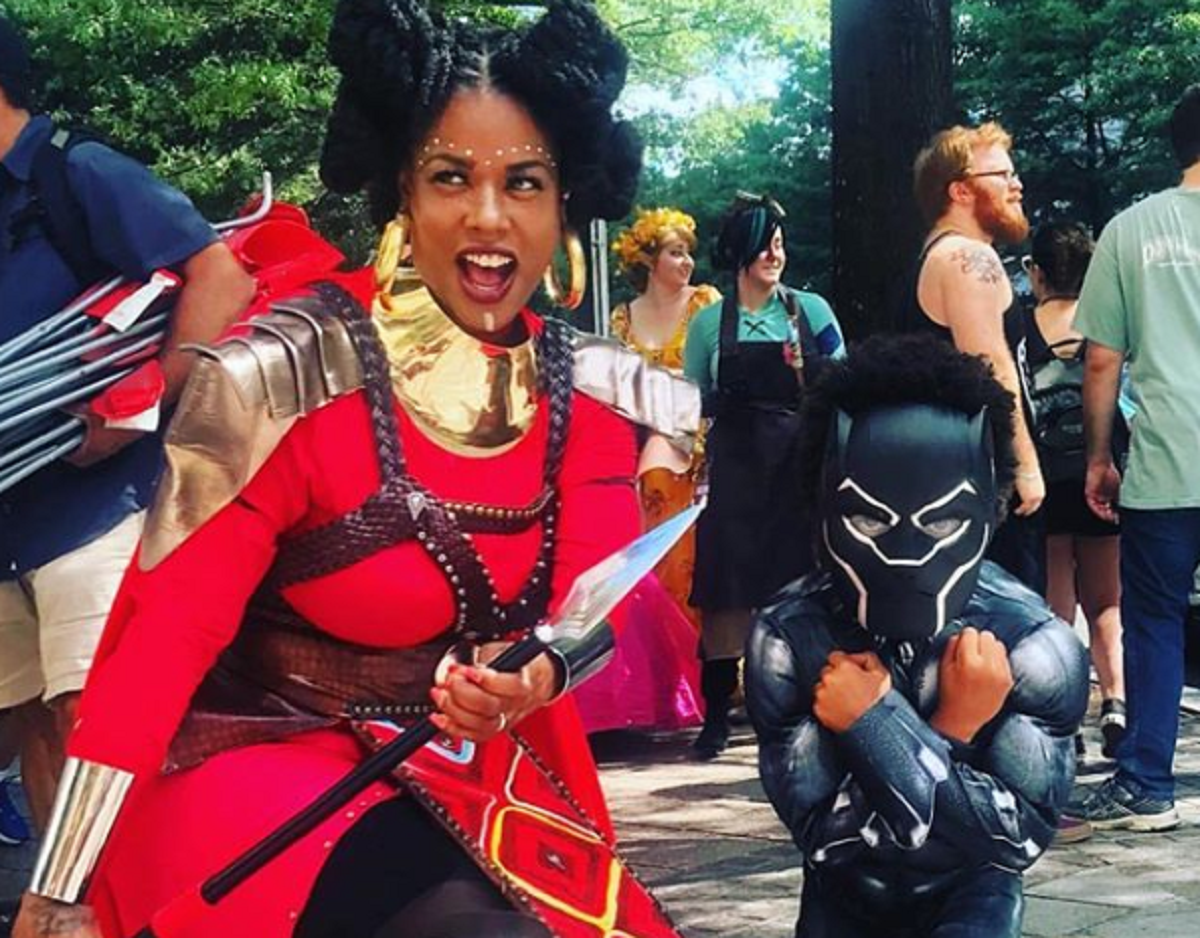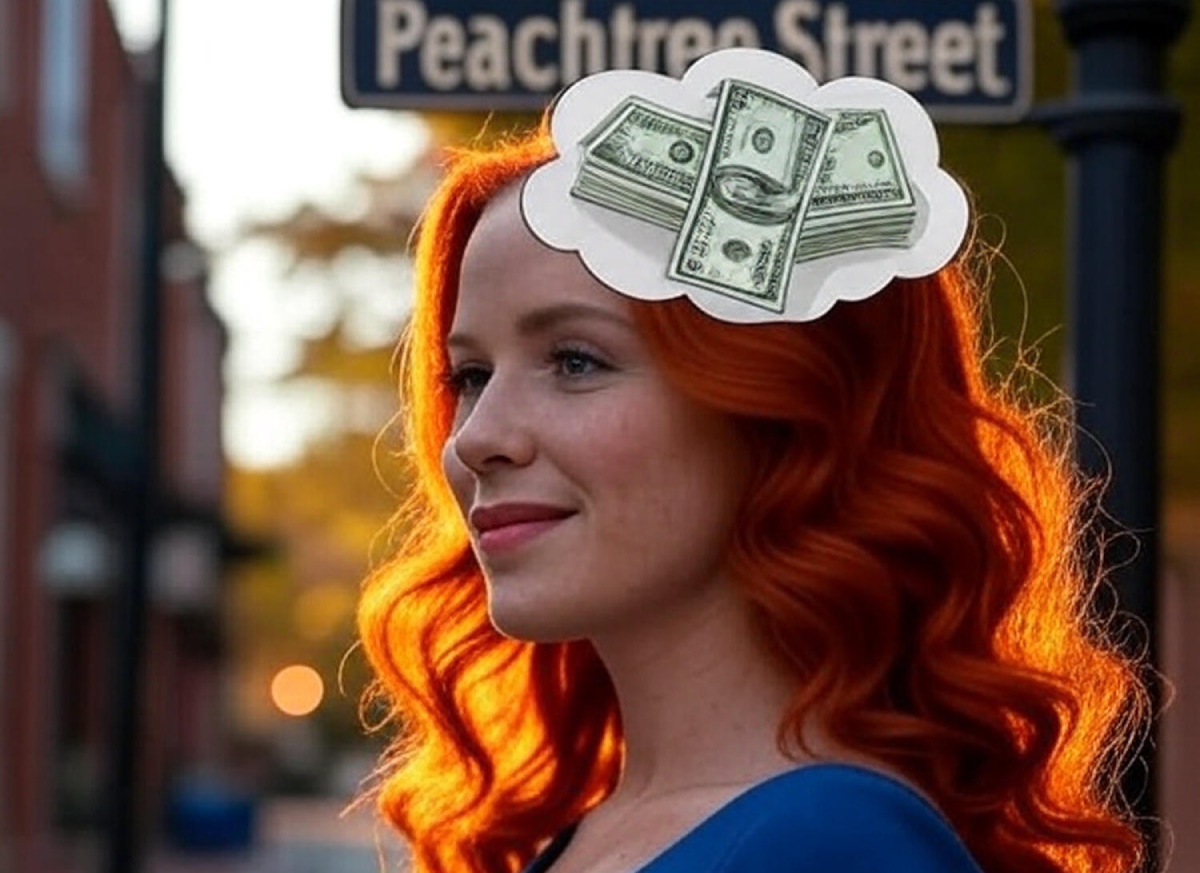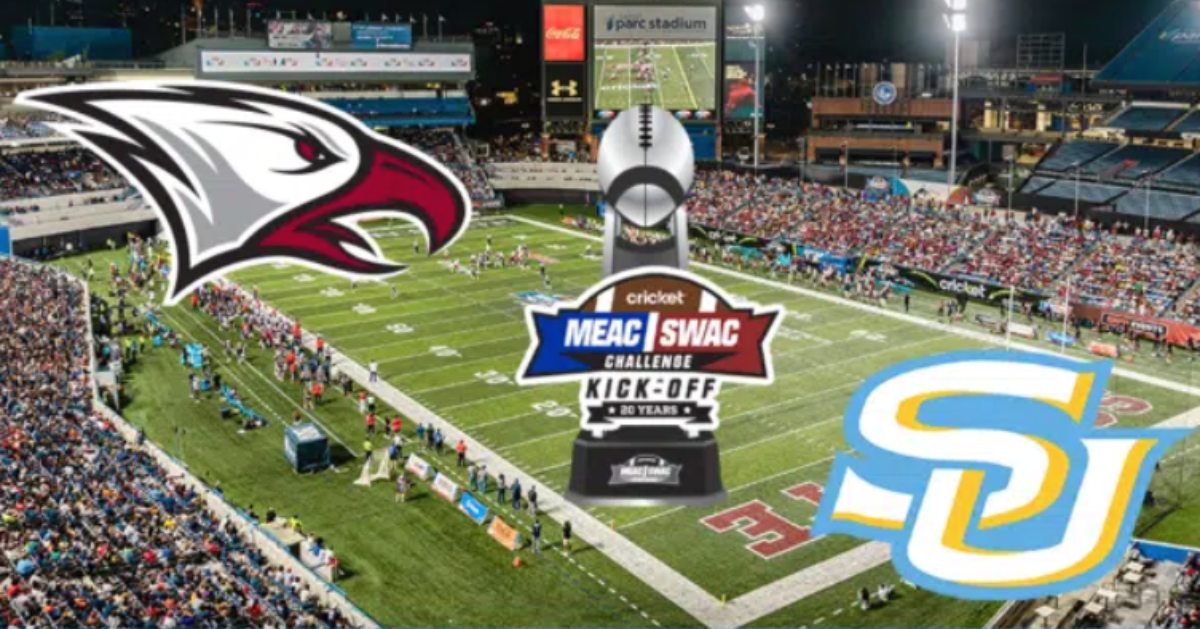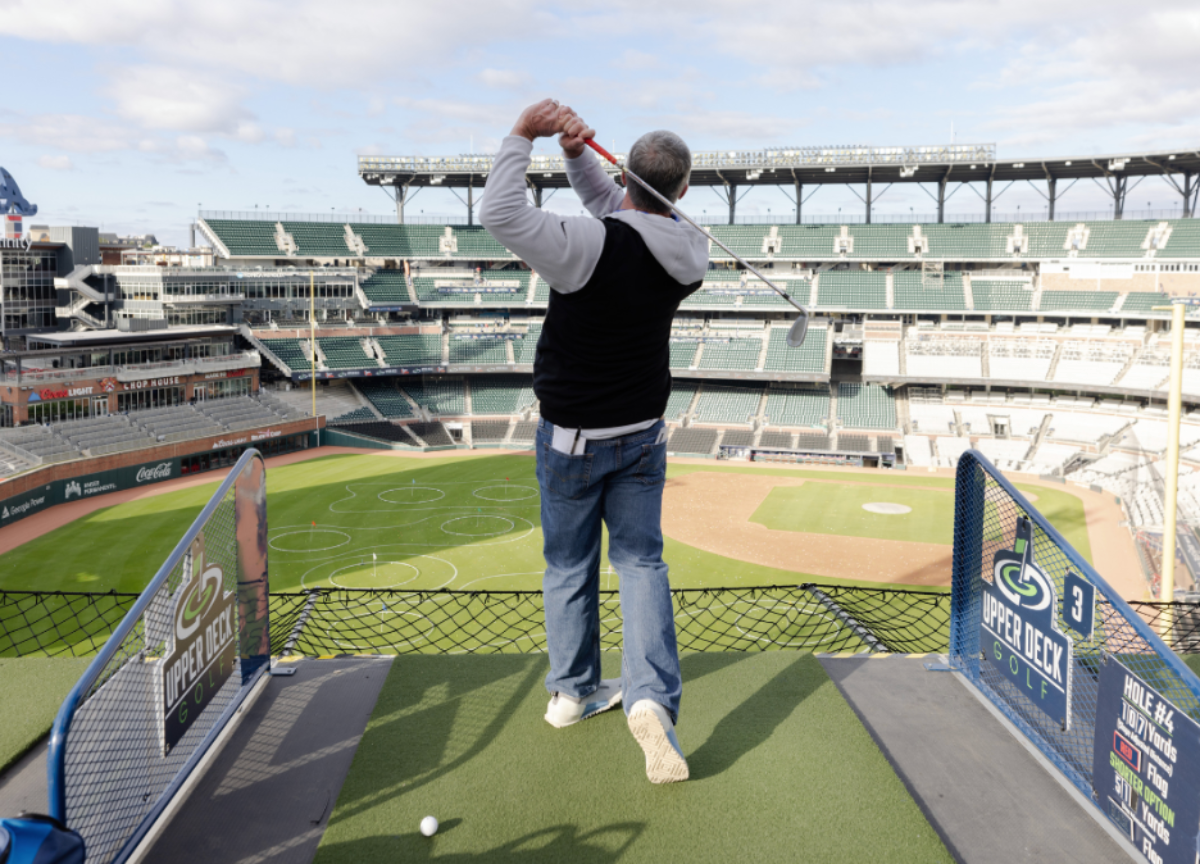-
The whimsical, elf-like Labubu toys, with their mischievous grins and quirky charm, have taken Atlanta by storm, becoming the latest must-have collectible for toy enthusiasts and pop culture fans alike.
Created by artist Kasing Lung and produced by Pop Mart, these adorable figures—known for their serrated teeth, high ears, and customizable outfits—have sparked a frenzy among collectors. From blind boxes to plush pendants, Labubu toys are flying off shelves, and Atlanta is no exception to the craze.
Here’s your guide to navigating the Labubu phenomenon in the ATL and where to snag these coveted collectibles.
What Are Labubu Toys?
Labubu toys are designer art figures that combine playful aesthetics with collectible appeal. Available as vinyl figures, plush toys, keychains, and bag charms, they come in various series, including the popular Exciting Macaron Blind Box and Big Into Energy collections.
Their limited-edition releases and collaborations with artists make them highly sought after, with some rare designs fetching $200–$300 on resale markets, far above their $10–$30 retail price.
The thrill of unboxing a blind box to reveal a surprise Labubu figure adds to their allure, making them a hit among Atlanta’s growing community of collectors.
Why Atlanta Loves Labubu
Atlanta’s vibrant pop culture scene, from comic conventions to streetwear meetups, has embraced Labubu as a fresh addition to the city’s collectible culture. Local collectors are drawn to the toys’ unique designs and the fun of dressing them up in tiny outfits, available separately for customization. Social media platforms like Instagram and TikTok have amplified the trend, with Atlanta-based collectors sharing their hauls and trading tips at local meetups.
However, the high demand means Labubu toys often sell out quickly, making it essential to know where to shop.
Where to Buy Labubu Toys in Atlanta
For Atlantans eager to join the Labubu craze, here are the top spots to find authentic Labubu toys, both in-store and online, while avoiding counterfeits:
Pop Mart USA (Online and Pop-Up Events)
Pop Mart, the official producer of Labubu, is the go-to source for guaranteed authentic figures. While Atlanta doesn’t currently have a permanent Pop Mart store, the official Pop Mart USA website (www.popmart.com) (www.popmart.com) offers the latest Labubu releases, including blind boxes and exclusive series.
However, new drops sell out in seconds, so collectors must act fast. Pop Mart occasionally hosts pop-up events in major cities, and Atlanta fans should keep an eye on social media for announcements about local appearances.
Walmart (In-Store and Online)
Labubu plush toys have gone mainstream, with select Atlanta-area Walmart stores stocking them. Availability varies, so call ahead to confirm stock at locations like the Walmart Supercenter at 1105 Research Center Drive SW or check walmart.com for online inventory. Prices typically range from $10 to $30, making Walmart a budget-friendly option for new collectors.
Instacart for Local Delivery
For those who want Labubu toys delivered to their doorstep, Instacart partners with local retailers to offer same-day delivery of Labubu plush toys in as little as one hour.
Check instacart.com to see if stores near you, such as Walmart or specialty toy shops, have Labubu in stock. First-time users may qualify for free delivery, making this a convenient option for Atlanta residents.
Specialty Toy Stores
Atlanta’s specialty retail scene is a treasure trove for collectors. Stores like Toy Federation (1120 McDonough Drive SE, Atlanta) and Pops & Comics (1272 McDonough Blvd SE, Atlanta) occasionally carry Labubu figures, especially blind boxes and accessories.
These shops are great for meeting other collectors and discovering rare finds, but call ahead to confirm availability, as stock is often limited. Pros include the ability to inspect items before purchase, though prices may be higher than retail due to demand.
Online Marketplaces (Amazon, eBay, StockX)
For Atlanta collectors willing to shop online, trusted platforms like Amazon, eBay, and StockX offer a wide selection of Labubu toys. Amazon (www.amazon.com) (www.amazon.com) has limited stock but is reliable for clothing and accessories, with prices like the Labubu Exciting Macaron Blind Box at $74.28. eBay (www.ebay.com) (www.ebay.com) boasts a broader range, including rare releases, but buyers should stick to sellers with at least 50 ratings to avoid fakes.
StockX (www.stockx.com) (www.stockx.com) provides an authentication guarantee, though prices can be higher. Always check seller reviews to ensure authenticity.
Third-Party Collectible Stores
Third-party retailers in the Atlanta area, such as Dragon’s Lair Comics & Fantasy (4851 Old National Hwy, College Park), may carry Labubu toys or blind boxes.
These stores are ideal for finding unique pieces and connecting with the local collector community. However, supply is limited, and prices may reflect a markup. Call ahead or visit store websites for stock updates.
Tips for Avoiding Fakes
With Labubu’s popularity, counterfeit toys are a growing concern. To ensure you’re buying authentic Labubu products in Atlanta:
- Shop Official Retailers: Stick to Pop Mart’s website or authorized resellers like Amazon or StockX for guaranteed authenticity.
- Check Seller Ratings: On eBay, choose sellers with 50+ positive reviews to minimize scam risks.
- Inspect Packaging: Authentic Labubu toys come in sealed Pop Mart packaging with official branding. Look for detailed craftsmanship and avoid suspiciously cheap deals.
- Join Local Collector Groups: Atlanta’s collector community on platforms like Instagram (@atlantatoycollectors) can offer tips on spotting fakes and finding trusted sellers.
Final Word
As Labubu’s popularity continues to soar, Atlanta collectors are hopeful for more local access, such as a dedicated Pop Mart store or vending machine, which have popped up in other cities.
For now, the combination of online shopping, local specialty stores, and mainstream retailers like Walmart keeps the city in the game.
The community aspect of collecting—trading figures, swapping outfits, and sharing finds at meetups—adds to the excitement, making Labubu more than just a toy but a cultural phenomenon in Atlanta.
Whether you’re a seasoned collector or a curious newcomer, the hunt for Labubu toys in Atlanta is an adventure. Check the listed retailers, stay vigilant for new drops, and join the local collector scene to make the most of this playful craze.
Atlanta has a lot of inspirational people and AtlantaFi.com is going to introduce you to many of them as well as cool places to go, great restaurants and other ATL happenings.
Got an event or know of something opening in and around Atlanta? Holla: CJ@AtlantaFi.com. See what’s poppin’ in the ATL! Subscribe to our news alerts here, follow us on Twitter and like us on Facebook.
-
As Labor Day weekend approaches, Atlanta’s vibrant culinary scene is gearing up for one of its most beloved annual events: the 10th Annual Taste of Soul Atlanta.
The Taste of Soul Atlanta event takes place this weekend in the heart of the city. It is one of the best festivals in Atlanta this time of year.
When Is Taste of Soul Atlanta?
Set to take place on Saturday, August 30, and Sunday, August 31, from noon to 9 p.m. each day, this free, family-friendly extravaganza promises an unforgettable blend of soulful eats, live music, art, and community spirit, all in the heart of the city’s historic downtown area.
Dubbed the “Soul Food Capital of the World,” Atlanta is the perfect backdrop for Taste of Soul Atlanta (TOSA), which will draw crowds to the area across from the iconic Mercedes-Benz Stadium at 385-545 Martin Luther King Jr. Drive NW.
The festival, now in its 10th year since launching in 2015, is expected to attract around 45,000 attendees over the two days, making it the largest event west of Peachtree Street.
A Feast for the Senses: Soul Food and Beyond
At the core of TOSA is its celebration of Southern and soul food traditions, featuring offerings from top local restaurants, chefs, and vendors.
Attendees can savor small tasting portions or full meals of classics like sizzling fried chicken, creamy mac and cheese, collard greens, cornbread, and homemade desserts.
The menu extends to fusion twists, including Caribbean and Latin-inspired dishes, ensuring there’s something for every palate. “From your grandmother’s secret recipes to innovative flavors she couldn’t have dreamed up,” the event promises a diverse culinary adventure.
Sunday’s highlight is the festival’s signature all-you-can-eat brunch buffet, accompanied by live soul and R&B music in an open-air setting. Wine enthusiasts won’t want to miss VinoTOSA, a tasting session at the historic mansion of Atlanta’s first African American millionaire, featuring wines from prestigious African American vineyards and urban winemakers.
With an estimated 20 food booths and 50 exhibitors, the festival emphasizes community involvement. Vendors are encouraged to provide meal vouchers to support staff, fostering a spirit of generosity amid the festivities.
Live Music and Entertainment to Groove To
Music is the heartbeat of Taste of Soul Atlanta, with performances across two stages from noon to 8 p.m. daily.
The lineup includes a national headliner and up-and-coming indie R&B and soul artists, guaranteed to “raise your body heat” on Saturday. Expect electrifying sets from performers like Phillipia and more, alongside 60 other live acts spanning genres such as R&B, soul, jazz, blues, and funk.
For those seeking a more intimate experience, the ticketed “Soul in the City” concert series offers premium seating in a private area near the main stage.
Saturday’s show focuses on high-energy R&B vibes, while Sunday’s elegant evening features soulful performances paired with global soul food selections and drinks.
Tickets start at around $31 and can be purchased online, with wristbands available for pickup at will call between 3 p.m. and 7 p.m.
Free music at the Phoenix Sound Stage adds to the laid-back atmosphere, where families can bring lawn chairs, play games, and enjoy the “best people-watching in Atlanta.”
Family Fun, Art, and Community Focus
TOSA isn’t just for foodies—it’s a true family affair. Kid-friendly activities, arts and crafts, and interactive games ensure entertainment for all ages.
The event also spotlights local artists and vendors, showcasing vibrant artwork and products that highlight Atlanta’s rich cultural tapestry.
Organized by Taste of Soul Fest and supported by partners like the Antoine McNeal Foundation, the festival underscores its commitment to community. It’s more than an event; it’s a celebration of Atlanta’s heritage in one of its oldest neighborhoods.
Entry to the festival grounds is free with registration—no entry charge required—making it accessible to everyone. For those planning to attend, parking is available nearby, and public transit options to the stadium area are recommended due to expected crowds.
Final Word
As Atlanta continues to evolve, events like Taste of Soul Atlanta remind us of the city’s soulful roots. Whether you’re a longtime resident or a visitor, this Labor Day weekend offers the perfect opportunity to indulge, unwind, and connect.
For more details, tickets to the concerts, or to register for free entry, visit the official website at tasteofsoulatlanta.com.
Atlanta has just about everything you need for a fun time in a big-city. If you love to laugh, you should check out the best comedy clubs in Atlanta.
For those who feel like dancing or vibing to some music, Atlanta’s got some of the best clubs in the South.
.
-
Dragon Con, the largest multi-media and pop culture convention in the universe, is set to take over downtown Atlanta this weekend. There’s a full slate of fun-filled events in store so if you’re into comics, movies, manga, anime, cosplay and more, you won’t want to miss this.
When Is Dragon Con 2025?
Dragon Con this year is set for August 28 to September 1, 2025. The event aims to bring together over 70,000 fans for five days of science fiction, fantasy, gaming, comics, literature, art, music, and film.
Celebrating its 39th year, this iconic Labor Day weekend event promises an unforgettable experience across five host hotels—Hyatt Regency Atlanta, Atlanta Hilton, Sheraton Atlanta, Atlanta Marriott Marquis, and Westin Peachtree Plaza—as well as AmericasMart Buildings 2 and 3.
Dragon Con 2025 will feature a diverse lineup of events, celebrity appearances, panels, workshops, and the world-famous Dragon Con Parade, drawing fans from across the globe to celebrate their shared passions. From cosplay to gaming tournaments, live performances to charity auctions, the convention offers something for every geek, nerd, and pop culture enthusiast.
Schedule of Events for Dragon Con 2025
Dragon Con runs around the clock from Thursday at 5:00 p.m. to Monday at 5:00 p.m., with thousands of hours of programming. Below is a curated selection of some of the can’t-miss events happening throughout the weekend. For the full schedule, visit the official Dragon Con website at www.dragoncon.org or download the Dragon Con app.
Thursday, August 28
- 5:00 p.m. – Convention Opens (All Venues): Dragon Con kicks off with registration and badge pickup across all host hotels.
- 8:00 p.m. – Twisted Toonz (Marriott Atrium Ballroom): A hilarious live movie read featuring voice acting superstars like Winnie the Pooh as Darth Vader and Christopher Walken as Harry Potter. Arrive early, as this event is a fan favorite
- 8:00 p.m. – DCW Wrestling (Hyatt Centennial Ballroom II-III): The 19th year of Dragon Con Wrestling brings high-energy matches and surprises, with the DCW Hooligans hyping up the crowd.
Friday, August 29
- 10:00 a.m. – Workshops Begin (Various Locations): Level up your skills with workshops on acting, writing, Tai Chi, belly dancing, and more. Check the schedule for specific times and locations.
- 7:00 p.m. – Pin-Ups by the Pool Party (Courtland Grand Hotel Pool and Courtyard): Hosted by May Hemmer and Phoebe Nyx, this poolside event features music, a pin-up competition, and glamorous fun. Dress in your best retro attire
- Midnight – Late-Night DJ Dances and Filk-Singing (Various Locations): Dance until dawn or join traditional sci-fi filk-singing sessions, running late into the night
Saturday, August 30
- 10:00 a.m. – Dragon Con Parade (Peachtree Street, Downtown Atlanta): The iconic parade showcases stunning cosplay, with thousands of costumed fans marching through the streets. Spectators are welcome to line Peachtree Street for this free, public event.
- 7:00 p.m. – Dragon Con Night at Georgia Aquarium (Georgia Aquarium): An exclusive after-hours event with ambient music, food, and drinks. General Admission and VIP tickets are available (Dragon Con badge lanyards not accepted). Shuttles depart from the Marriott Marquis at 6:00 p.m.
- 8:00 p.m. – Georgia Philharmonic Orchestra (Hyatt Regency Centennial Ballroom): Enjoy a 90-minute symphonic performance of iconic film, TV, and video game scores, perfect for fans of all ages.
- 9:00 p.m. – Palmetto Knights Tournaments (Courtland Grand Hotel): Witness unchoreographed medieval combat demonstrations by the Palmetto Knights, showcasing historical tactics and weaponry.
Sunday, August 31
- 10:00 a.m. – Kids Character Encounter (Hyatt Regency V): A family-friendly event where kids can meet and take photos with over 50 costumed characters in a stroller-friendly space.
- 8:00 p.m. – Dragon Con Burlesque: A Glamour Geek Revue (Courtland Grand Hotel, Grand Ballroom): Hosted by May Hemmer, this dazzling show features glamorous geek-themed performances. Free with your Dragon Con badge.
- Midnight – Late-Night DJ Dances and Filk-Singing (Various Locations): The party continues with more dancing and filk-singing sessions.
Monday, September 1
- 10:00 a.m. – Author Signings (Westin Overlook): Meet your favorite authors for free autograph sessions. Check the schedule for participating guests, as some may have limitations on items signed.
- 8:00 p.m. – The Late Night Puppet Slam (Westin Peachtree Ballroom): Join Bob and Carl: The Sci-Fi Janitors for a hilarious, 18+ puppet variety show featuring geeky acts from the Puppetry Track.
- 5:00 p.m. – Convention Closes (All Venues): Dragon Con 2025 wraps up, leaving fans counting down to next year’s 40th anniversary celebration.
Highlights and What to ExpectDragon Con 2025 promises a vibrant lineup of celebrity guests, including artists like Francesco Francavilla (his first convention appearance since 2019), Tom DeFalco, Becky Cloonan, and Steve Englehart, who will be featured in the Comics and Pop Art Alley at AmericasMart.
Kids 12 and under can pick up complimentary sketchbooks at the Comic and Pop Artist Alley info table for free sketches and autographs from participating artists.
The convention also hosts the Dragon Con Charity Auction, raising funds for worthy causes, and features exhibitors from major brands to indie creators showcasing new products. Gaming enthusiasts can dive into epic sessions, while cosplayers will shine in the parade and various contests.
The event spans multiple genres, including anime, comics, costuming, fantasy, gaming, media, steampunk, and video gaming, ensuring there’s something for everyone.
For music lovers, Dragon Con 2025 will feature performances by bands like Lame Genie and Jason Charles Miller, adding a heavy metal and rock vibe to the festivities. Video rooms at the Hilton (202 & 203) will screen cult classics, anime, and mixed media animation, with both subbed and dubbed options available.
Practical InformationDragon Con takes place across five hotels in the Peachtree Center neighborhood near Centennial Olympic Park, with additional vendor space at AmericasMart.
Tickets are available for purchase, and prices can be found on the official Dragon Con website. Note that some events, like Dragon Con Night at Georgia Aquarium, require separate tickets. Attendees are encouraged to review the convention’s no-weapons policy and prepare for security checks, especially at off-site events.
Final Word
With so much to see and do, planning your Dragon Con weekend is essential. Visit dragoncon.org for the latest schedule updates, guest announcements, and ticket information.
Whether you’re a first-timer or a seasoned Dragon Con veteran, this year’s convention promises to be a galactic celebration of pop culture. Don’t miss out on the fun—Atlanta’s biggest party is just days away!
More Content From AtlantaFi.com:
-
Renting an apartment in Atlanta, Georgia, can be an expensive endeavor if you don’t have a strategy in mind.
After all, owning a home is just a dream for many people. If you’re interested in renting an apartment or home, you need to know how to do it and keep your shirt on. Otherwise, you could give away some key concessions to your landlord.
In this article, we’re going to go over how you can rent an apartment in the city. There are some affordable options to choose from.
Here’s How To Rent An Apartment In Atlanta
If you want to rent an apartment in Atlanta and don’t know where to start, here are the steps:
1. Shop Around
First thing you need to do before you rent an apartment in Atlanta is find one. To do that, you can use a number of online services to help find an apartment in Atlanta:
If you don’t already know, apartments on the northside, in places like Buckhead, Sandy Springs, Dunwoody, Roswell and Alpharetta are more expensive.
Midtown Atlanta apartments have gone up in price dramatically over the last few years as well. The most affordable apartments will be a short distance from downtown in either east Atlanta or the westside next to West Midtown.
Once you make a list of Atlanta apartments you want to check out from one of the services above, you can begin to make appointments to visit.
You’ll want to pay special attention to the amenities that each apartment offers. You may put a big emphasis on on-site laundry facilities, a pool, a courtyard, lounge and other things.
2. Have Your Finances in Order
Before you begin to schedule visits, you need to have your financials in order. Landlords don’t just let you move in, you’ll need a credit check. The idea behind this is that you have to show income stability.
Get a free credit report at annualcreditreport.com, the only authorized website for free credit reports from the three major credit bureaus Equifax, Experian and TransUnion.
When you get the credit reports, go over them with a finetooth comb to make sure they’re accurate.
If you see a discrepancy on your credit report, here’s how to dispute it:
https://atlantafi.com/how-to-dispute-your-credit-score-really-easily/
Not only will you need to have your first and last month’s rent in your account (as we’ll get into), but you’ll need to have more money on hand for some incidentals.
3. Visit The Apartment
When you visit the apartment, make sure you the age of the building and style is to your liking. Feel the walls so that you can gauge whether they’re thin and well built.
Look out for loud neighbors and other things that may affect your ability to have a good night’s rest.
If you like what you see, make an offer.
4. Negotiate Your Rent
You don’t have to accept what the landlord offers. See if you can negotiate. If you sign a two-year lease rather than one year, you may be able to get a better deal. You won’t know what’s capable until you ask.
If the leasing agent can’t make any concessions, see if you can get the hookup on parking or a one-month discount in lieu of a move-in special.
Here are some methods on negotiating your rent.
5. Sign The Dotted Line
When you sign the lease, you may need to have a list of references. These should be people you’ve contacted ahead of time who will have only good things to say about you.
Their input will be what decides your worthiness.
Before you sign your lease, you need to know what to expect as far as charges and fees. Here are some of the charges you may be asked to pay:
- Rental application fee
- Security deposit
- Last month’s rent
- Move-in fee or finders fee
Depending on where you rent your place and your specific circumstances, you may also be asked to pay a pet fee or even parking space fee.
Before you sign an apartment lease, read this.
Once you pay what you owe, your landlord or leasing agent will hand over the keys to your new apartment. Remember to keep it down and always be considerate of your neighbors.
What if you have bad credit?
How To Rent An Apartment With Bad Credit
The first thing you need to do is look for apartments that don’t do credit checks on potential tenants.
You’re also going to want to entice the landlord by offering to pay more upfront or even every month.
So, to recap, if you have bad credit, the way to rent an apartment is:
- Find apartments with no credit checks
- Offer to pay more upfront
Atlanta is a great place to live.
Up next: The best Airbnbs in Atlanta
Atlanta has one of the best real estate markets in the country, with affordable housing in every quadrant of the city. Large backyards, manicured parcels and strong neighborhoods with ample dining amenities make it one of the top places for transplants.
Keep up with what’s going on in Atlanta’s real estate scene here with our Apartment Guide.More Articles From AtlantaFi:
-
Though home sales have slightly declined recently, metro area home values remain steady, per recent real estate data.
You may be curious to know how much an average Atlanta home costs in the current real estate market.
What Is The Average Price Of A Home In Atlanta?
According to recent figures from Zillow, the average value of a home in Atlanta is $396,813, which is down more than 4.6% compared to last year. Obviously, the state’s capital city would have the highest home values.
The average home in Atlanta consists of:
- 3 bedrooms, 2 bathrooms
- A one-quarter acre lot
- Central air and heating unit
In Georgia, the average home value is about $301,978, according to Zillow. The Peach State has experienced about a 23.7% increase in home values over the last 18 months.
Are Home Prices Dropping In Atlanta?
In Atlanta, home prices are starting to cool after a string of months that saw gains across all types of units. Even the cost of land is high in Georgia now.
Here are the average home prices across the top 10 metro areas, according to Realtor.com’s latest calculations.
April 2024 Housing Overview of the 50 Largest Metros
Metro Area Active Listing
Count YoYNew Listing
Count YoYMedian Days
on MarketMedian Days
on Market Y-Y
(Days)Price–
Reduced
SharePrice-
Reduced
Share Y-Y
(Percentage
Points)Atlanta-Sandy Springs-Alpharetta, Ga. 42.7 % 27.4 % 39 -4 17.7 % 6.1 pp Austin-Round Rock-Georgetown, Texas 23.6 % 36.1 % 42 -3 24.7 % -2.5 pp Baltimore-Columbia-Towson, Md. 15.3 % 3.8 % 36 -1 12.0 % 2.6 pp Birmingham-Hoover, Ala. 36.5 % 23.6 % 46 1 14.9 % 2.6 pp Boston-Cambridge-Newton, Mass.-N.H. 7.5 % 4.5 % 24 -1 10.4 % 1.2 pp Buffalo-Cheektowaga, N.Y. 5.1 % 3.4 % 34 -6 5.3 % -0.3 pp Charlotte-Concord-Gastonia, N.C.-S.C. 31.9 % 20.3 % 37 -2 16.9 % 5.7 pp Chicago-Naperville-Elgin, Ill.-Ind.-Wis. 0.1 % 7.4 % 34 -4 8.5 % 0.2 pp Cincinnati, Ohio-Ky.-Ind. 23.2 % 9.4 % 32 1 10.7 % 3.3 pp Cleveland-Elyria, Ohio -2.4 % 3.4 % 39 -3 11.1 % 1.7 pp Atlanta has one of the best real estate markets in the country, with affordable housing in every quadrant of the city. Large backyards, manicured parcels and strong neighborhoods with ample dining amenities make it one of the top places for transplants.
Not to mention that the city’s dining scene is the best in the Southeast. Looking for a home? Check out our Real Estate Resource Page.
Keep up with what’s going on in Atlanta’s real estate scene here with our Apartment Guide.
See The Latest Atlanta Real Estate News At AtlantaFi.com.
More Articles From AtlantaFi:
-
I was at the grocery store the other day and it seems as if the prices are higher than ever. It got me to thinking about how expensive Atlanta has become in general. I mean, you get hit in so many ways, from the parking to the Uber rides to the property taxes — it’s like it never ends!
What do you think? Has Atlanta gotten more costly over the past few years?
Is Atlanta Expensive?
Believe it or not, Atlanta’s cost of living is slightly below or around the national average, depending on the source, and higher than the Georgia state average.
In this article, we’ll show you how expensive Atlanta is compared to the rest of the nation —- and other parts of Georgia.
Here are key metrics from recent estimates:
- The cost of living in Atlanta is 17.6% less expensive than Seattle (excluding rent), with rent 30.4% lower than Seattle. Estimated monthly costs are $4,792.7 for a family of four (excluding rent) and $1,329.9 for a single person (excluding rent).
- Utilities, including electricity, heating, cooling, water, garbage, internet, and phone services, range from $130 to $350.
- Atlanta’s food costs are slightly above the national average.
- Transportation costs are close to the national average, with options for public transit, driving, or taxis.
Housing
Housing is the largest expense for most households in Atlanta. If you’re considering moving to Atlanta, you should know that costs vary significantly by neighborhood and whether you rent or buy.
Rent
- Average Rent (2025):
- 1-bedroom apartment in city center: $1,806.54 to $2,262 (furnished 45m² studio). Average: ~$1,900–$2,000/month.
- 1-bedroom outside city center: $1,503.80 to $1,515 (furnished 45m² studio). Average: ~$1,500/month.
- 3-bedroom apartment in city center: $3,070.23. Average: ~$3,000/month.
- 3-bedroom outside city center: $2,210 to $2,031 (85m² furnished). Average: ~$2,100/month.
- General average rent: $1,636/month for an apartment (0.2% below national average).
Looking for a new lease? Read our guide on easy ways to lower your rent.
Mortgage
The average value of an Atlanta home is on the decline. For a median-priced home (~$395,000), monthly payments are approximately $3,162, requiring an annual household income of $126,487 to keep payments at 30% of income.
- Price per square foot: $270.10 in city center, $199.34 outside center.
- Property taxes vary by county. Fulton County: 1.09%, Gwinnett County: 1.30%, Cobb County: 0.84%.
Housing costs are rising, potentially slowing population growth. Service workers may find it hard to live in the city due to high rents and limited public transit efficiency.
Average Monthly Expenses for an Atlanta Family
Monthly Expenses Table for a Three-Person Household in Atlanta:
Category Excluding Rent Including Rent Notes Housing (Rent) $0 $1,850 Average 2-bedroom apartment outside city center ($1,800–$1,900, Numbeo/Expatistan). Utilities $210 $210 Electricity, heating, cooling, water, garbage (~$171–$241, scaled for 3 people). Internet: $55, Phone: $100 (2 lines). Groceries $525 $525 ~75% of family-of-four cost ($700, Apartments.com). Includes staples like milk ($3.84/gallon), eggs ($4.19/dozen), chicken ($6.62/lb). Dining Out $150 $150 2 inexpensive restaurant meals ($23.50 each) + 2 fast food meals ($12 each) per month. Transportation $350 $350 Mix of public transit (MARTA monthly pass: $95) and car use (gas: $3.10/gallon, maintenance: ~$255). Scaled from $393 (Apartments.com). Healthcare $135 $135 Doctor visits ($128), dentist ($142), scaled for 3 people (87% of family-of-four cost, $155). Excludes insurance premiums. Childcare $1,000 $1,000 Private preschool for 1 child ($1,128, Numbeo, adjusted for moderate option). Clothing $90 $90 Scaled from $104.80 (Numbeo, single person). Jeans: $49.38, shoes: $90–$102. Entertainment/Leisure $200 $200 Fitness club ($44), 2 movie tickets ($15.50 each), occasional outings. Scaled from $226.41 (Numbeo). Goods/Services $900 $900 Toiletries, household items, dry cleaning, etc. (~88% of $1,025, Apartments.com). Total $3,560 $5,410 Excludes taxes and insurance. Income needed: $64,320/year (excluding rent) to $97,380/year (including rent), pre-tax. Final Word
Atlanta’s cost of living is ~4% below the national average but 7%–19.9% above Georgia’s average. Housing is 13% cheaper than the U.S. average, but healthcare and groceries are slightly higher.
When it comes to housing, you should know the Atlanta rental market before you lease anything.
As you might imagine, costs in affluent neighborhoods are higher while they are lower in suburbs (e.g., Decatur, McDonough: ~$1,500–$1,700 for 2-bedroom) and higher in upscale areas (e.g., Midtown: $2,500+).
The key? Look for ways to save money.
Costs can be reduced by using public transit exclusively ($95/month), shopping at discount stores, or choosing cheaper childcare options.
Want to save money on groceries and cut your bill in half? Of course, you do.
More Articles From AtlantaFi:
-
Your credit profile is the key to achieving financial freedom and effectively managing debt. You can enhance your credit gradually over time or with faster, targeted efforts.
Believe it or not, there are some easy steps you can take to raise your credit score quickly. In this article, we’ll go over some ways to do just that.
How To Improve Credit Score Quickly
The reason why your credit score may be low is because of delinquencies — bad debt or bills that you couldn’t pay. These absolutely kill your credit score because unpaid bills tell creditors that you can’t be trusted with debt.
Another thing that could ding your credit are inquiries, which is when a lender inquires as to your creditworthiness. When an inquiry is made your credit may fall a few points.
What Is A Good Credit Score?
A good credit score is one that is generally above 650 and between 600-750. Anything below 500 and you may not be able to get credit, or borrow.
Here is a scale to let you know what’s good, bad and excellent credit:
- Exceptional: 850-800
- Very Good: 799-740
- Good: 739-670
- Fair: 669-580
- Poor: 559-300
About 67% of Americans have a good credit score, according to Experian, one of the national credit bureaus.
How Long Does It Take To Improve Your Credit Score?
It takes as short as 30 days to raise your credit score, but don’t get upset if it takes two months instead.
You didn’t get in financial trouble overnight, so likewise with this, it’s going to take some time to improve your credit. Now let’s talk about how to improve your credit fast in 3 ways:
How To Raise Your Credit Quickly In 4 Ways
You can raise your credit score quickly in a few ways:
1. Get Your FREE Credit Report
First, you need to access your credit report. As an American, you are entitled to one free credit report every year. You can get it by going to annualcreditreport.com.
Once you have your credit report, you need to look over it pretty good. You’ll be looking for any mistakes on any negative items that are on it.
If you dispute anything on your credit report, especially a collection or inquiry, the company must prove that it followed the law. If they can’t prove it (and many can’t) you can have the negative marks removed from your report.
This could raise your credit dramatically!
2. Contact Your Creditor
Believe it or not, creditors want to work with you to bring your account into good standing. If you missed a payment for one reason or another, they may be able to forgive the debt if you contact them.
Resist the temptation to call them. You should write a letter or email and get a documented reply.
If your creditor agrees to forgive the debt, your credit score could rise dramatically!
3. Pay Your Bills On Time
The best way to pull your credit out of the dumps is to make some on-time payments. This will help you build or rebuild your credit history.
Your credit history is the key to being able to borrow money from the banks or get a credit card.
4. Get A Secured Credit Card
A secured credit card is one that may require a deposit and a credit limit somewhere around $2,000. As you pay your bills on time, your credit limit grows.
Nothing tells the credit bureaus that your financial health is improving like credit card use. Of course, you’ll want to keep your credit card debt under control and don’t swipe if you can’t pay it off at the end of the month.
That’s the key: As you keep your credit card bills low, always pay on time.
5. Boost Your Credit By Paying Your Bills
One website that allows you to build your credit quickly is StellarFi, which allows you to build your credit by paying your bills.
One of the most important things you can do is maintain good credit. If you don’t have a high enough credit score, you need to improve it — but how?
Watch this video of Milan and Home-Free USA as she gives more tips on how to improve your credit.
How Many Credit Cards Should I Have To Improve My Credit Score?
The idea that your credit can be hurt by having a large number of credit cards has some truth in it. That’s because of what’s called your debt-to-credit ratio.
A debt-to-credit ratio tells creditors how many of your borrowing power as a whole are you using up by paying your credit card bills. If you overextend yourself, the creditors will use it against you.
As for how many credit cards you need to improve your credit score, there’s no hard and fast rule. That being said, a couple credit cards in the black should suffice.
Summary
So, yes, you can improve your credit fast, but you’ll need to do three things. Let’s go over them again:
- 1. Get Your Free Credit Report
- 2. Contact Your Creditor
- 3. Pay Your Bills On Time
- 4. Get A Secured Credit Card
Are you trying to become more financially literate? Check out Money Mondays at AtlantaFi.com, where we’ll share strategies to save and make cash.
If saving money is something you’re serious about, AtlantaFi.com has a lot of resources to help you.
Read more:
-
The Georgia Aquarium in downtown Atlanta has sad news: It says that Taroko, a male whale shark, was euthanized on Wednesday, August 20 due to declining health after nearly 20 years at the facility.
Despite veterinary efforts, his appetite and behavior worsened, the aquarium stated on social media.
Rescued from Taiwan in 2007, Taroko inspired over 43 million visitors and contributed valuable data on whale shark biology.
A necropsy will investigate the cause of his health issues.
How Many Whale Sharks Does The Georgia Aquarium Have?
The aquarium now has one whale shark remaining in its Ocean Voyager exhibit as of August 21, 2025.
“Caring for whale sharks is a privilege, and we were honored to share Taroko with you,” officials said.
How Do Whale Sharks Typically Fare in Captivity?
Whale sharks in captivity face significant challenges, and their overall welfare is often compromised compared to their natural environment. Here are some issues to consider:
- Lifespan and Health: Whale sharks in the wild can live up to 70-100 years, but in captivity, they often experience shorter lifespans due to health issues. For example, Taroko, a whale shark at the Georgia Aquarium, was euthanized after nearly 20 years due to declining health, despite veterinary care. Common issues include reduced appetite, abnormal behavior, and difficulty adapting to confined spaces, as seen in Taroko’s case.
- Space and Environment: Whale sharks are the largest fish species, growing up to 40 feet and requiring vast ocean ranges to thrive. Even large facilities like the Georgia Aquarium’s 6.3-million-gallon Ocean Voyager exhibit cannot replicate the open ocean’s scale, food availability, or natural migration patterns. This confinement can lead to stress and physical ailments.
- Diet and Behavior: In captivity, whale sharks are fed controlled diets, often plankton or krill-based, which may not fully meet their nutritional needs. Behavioral changes, like those noted in Taroko, are common, as captivity restricts their natural foraging and migratory behaviors.
- Survival Rates: Data from facilities like the Georgia Aquarium and Japan’s Okinawa Churaumi Aquarium shows mixed outcomes. Some whale sharks adapt temporarily, but others decline rapidly. For instance, the Georgia Aquarium has lost multiple whale sharks since opening in 2005, with only one remaining as of August 2025.
- Ethical Concerns: Many marine biologists and conservationists argue that whale sharks, as filter-feeding, migratory species, are ill-suited for captivity. The stress of transport, limited space, and unnatural diets can lead to compromised health, raising ethical questions about keeping them in aquariums.
Final Word
While facilities like the Georgia Aquarium provide valuable data on whale shark biology and inspire public interest, the consensus is that captivity often fails to meet their complex needs, leading to health issues and reduced lifespans compared to the wild.
-
The 20th annual Cricket MEAC/SWAC Challenge Kick-Off takes place this weekend in Atlanta’s Center Parc Stadium on Saturday, August 23.
The North Carolina Central University (NCCU) Eagles face off against the Southern University Jaguars in a primetime showdown that marks the start of the 2025 HBCU football season.
With a packed house of over 22,000 fans and a national audience tuning in on ABC at 7:30 PM ET, the game delivered high-stakes competition, vibrant pageantry, and a celebration of HBCU culture.
NCCU Vs. SU: A Clash of Titans
The Eagles, representing the Mid-Eastern Athletic Conference (MEAC), enter the game with a 1-1 record in the Challenge, fresh off a 2021 victory over Alcorn State.
Led by head coach Trei Oliver, NCCU boasts a veteran squad, including Preseason First Team All-MEAC honorees quarterback Walker Harris, defensive back Malcolm Reed, and offensive lineman Trevon Humphrey. The team’s offensive line, returning all five starters, promises stability and power in the trenches.
On the other side, the Southwestern Athletic Conference (SWAC) powerhouse Southern University Jaguars, under second-year head coach Terrance Graves, comes in with a perfect 3-0 record in previous MEAC/SWAC Challenge appearances. Predicted to win the SWAC West Division, the Jaguars lean on a formidable defense led by Preseason Defensive Player of the Year Chelky Givens and All-SWAC selections Vincent Paige Jr. and Horacio Johnson.
This matchup is only the second meeting between the two programs, with NCCU holding a 27-20 victory from their 2006 encounter in Baton Rouge, a game where the Eagles’ defense forced five interceptions. The stakes were high, as both teams aimed to set the tone for their 2025 campaigns.
More Than Just a Game
The Cricket MEAC/SWAC Challenge is renowned for its celebration of HBCU traditions, and this year’s event was no exception.
The day kicks off with the Coca-Cola Fan Experience at 3:00 PM in Summerhill Lot A, featuring music, food, and family-friendly activities.
At 4:00 PM, the Band Jamboree showcased high school bands from McNair and Creekside, followed by a highly anticipated showdown between NCCU’s Sound Machine and Southern’s Human Jukebox, fresh off their Super Bowl LIX performance. The post-game 5th Quarter Battle of the Bands promised to keep the energy soaring.
“This is the 20th anniversary of the MEAC/SWAC Challenge,” said John Grant, executive director of ESPN Events. “We expect this will be a can’t-miss clash of titans with both football teams and marching bands.” The event’s historical significance was underscored by the MEAC’s 11-7 lead over the SWAC in the series, though the SWAC has won the last three matchups.
On the Field
The game itself was a showcase of HBCU football’s grit and talent. NCCU, under Oliver’s leadership, has a 6-0 record in classics, bowls, and challenge games since 2019, including a 2022 Cricket Celebration Bowl victory over Jackson State in Atlanta. Southern, coming off an 8-5 season and a SWAC West title in 2024, brought a stingy defense that ranked top-three in the SWAC last year.
Adding intrigue to the matchup, Oliver and assistants Matt Leone and Macander Dieudonne have deep ties to Southern, having coached there earlier in their careers. Oliver served as Southern’s defensive coordinator from 2016-2018, giving him intimate knowledge of the Jaguars’ program. “You’re gonna get mopped,” Oliver quipped when asked about teams underestimating NCCU, while Graves countered, “When you stay ready, you don’t have to get ready.”
Community and Culture
Beyond the gridiron, the weekend was packed with events celebrating HBCU culture. On Thursday, August 21, a high school seminar at New Manchester High School inspired over 5,000 students with career-focused panels hosted by ESPN’s Jay Harris.
Friday featured alumni golf tournaments for both schools and an ESPN Welcome Reception at The Gathering Spot. These events underscored the Challenge’s motto, “More Than Just A Game,” emphasizing education, community, and legacy.
A National StageWith last year’s MEAC/SWAC Challenge drawing 1.3 million viewers, the largest audience in the event’s history, this year’s game was poised to captivate an even broader audience.
Atlanta, a second home for NCCU with recent wins in the city, provided the perfect backdrop for this primetime spectacle. Fans packed Center Parc Stadium, located at 755 Hank Aaron Dr. SE, to witness not just a game, but a celebration of HBCU pride, talent, and tradition.
For those unable to attend, tickets are available online, and fans were encouraged to plan parking and review stadium policies at meacswacchallenge.com.
As the Eagles and Jaguars battle under the lights, the 2025 Cricket MEAC/SWAC Challenge Kick-Off reaffirmed its place as a cornerstone of HBCU football, setting the stage for an unforgettable season.
Where To Eat Near Center Parc Stadium
Atlanta’s Center Parc Stadium is situated in the Summerhill neighborhood, which has become a foodie paradise. Here are some nearby restaurants that are good:
Cava
572 Hank Aaron Dr SE, Atlanta, GA 30315

- Menu Item to try: Harrisa Avacado: Harissa honey chicken, Crazy Feta, hummus, fire-roasted corn, avocado, rice, SuperGreens and more.
- What one customer says: “I can’t speak to every Cava but in a city where lunch spots come and go like shifting winds, there exists this humble cava that manages to marry precision with heart. Please say hi to ever-gracious Pricilla and her amazing colleagues, this establishment runs like a well-oiled machine, professional, efficient, and remarkably consistent. The food? Always warm. Always satisfying.”
Love eating healthy options? Check out the best salad restaurants in Atlanta.
Talat Market
112 Ormond St SE, Atlanta, GA 30315

- Menu Item to try: Green curry with catfish
- What one patron says: “Talat Market is a gem! The food is absolutely incredible, blending Thai flavors with Southern ingredients in such a creative way. The green curry with catfish was a standout, and the atmosphere is cozy yet vibrant. Highly recommend!”
Wood’s Chapel BBQ
85 Georgia Ave SE, Atlanta, GA 30312
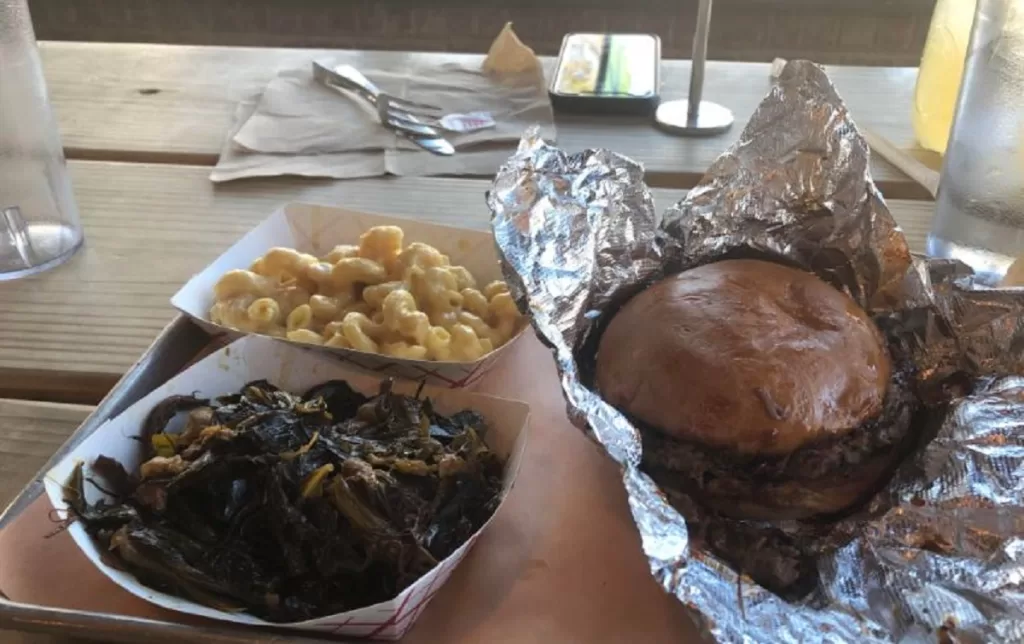
Photo credit: AtlantaFi.com - Menu Item to try: Whole hog barbecue
- What one customer says: “Great barbecue joint feel with friendly staff and amazing food. I enjoyed the chopped brisket, smoked wings, Mexican corn, and beans. My wife enjoyed it as well.”
Want more? Read our Summerhill Food Guide.
Final Word
Summerhill is one of Atlanta’s most dynamic neighborhoods and one of the best places to eat on the southside. The street’s walkable, trendy vibe, enhanced by vibrant murals and restored brick storefronts, draws food enthusiasts and supports a burgeoning dining scene.
More Food Coverage:
Here Are The Best New Restaurants In Atlanta
-
ATLANTA, GA – August 21, 2025 – The Atlanta Braves have announced the return of Upper Deck Golf, an immersive golfing experience, to Truist Park in November.
This unique three-day event offers fans the chance to play a round of golf inside the home of the Atlanta Braves, blending the excitement of golf with the iconic atmosphere of one of Major League Baseball’s premier ballparks.
What Is Upper Deck Golf and When Is It Coming To Atlanta?
Upper Deck Golf transforms Truist Park into a 9-hole golf course, allowing participants to hit tee shots from the upper deck down to custom greens on the field below. The event is designed for players of all skill levels, offering a memorable opportunity to experience both the ballpark and the game of golf in a new way.
Upper Deck Golf is coming to Atlanta Nov. 20-22, 2025.
“We’re thrilled to bring Upper Deck Golf back to Truist Park,” said Upper Deck Golf Co-Founder Brian Graham. “This event is about creating unforgettable moments, combining the thrill of golf with the unique setting of a legendary ballpark. We can’t wait for fans to experience Truist Park like never before.”
Attendees can also enjoy a festive clubhouse atmosphere featuring live music, cold drinks, food, and a variety of golfing challenges, including driving, chipping, and putting contests.
This marks the second year that Upper Deck Golf has partnered with the Braves, following a successful event in 2024.
For 2025, the experience has been enhanced with new features to elevate the fun. PXG, the exclusive equipment partner, will provide participants with brand-new PXG 0311, Black Ops, Wildcat Irons, and Sugar Daddy Wedges, though players may bring their own clubs (limited to sand wedge through 8-iron for safety).
All players will receive PXG Xtreme Tour golf balls, designed for accuracy and responsiveness to help golfers aim for the pin. Those who score a hole-in-one on the designated PXG hole have a chance to win a custom set of clubs.Tee times will be available from 7:00 a.m. to 9:00 p.m. each day, offered in two-player increments.
VIP tee times provide a premium experience, including free entry to driving, chipping, and putting challenges, complimentary food and beverages, and four extra “mulligan” balls per round (22 balls total compared to the standard 18).
A typical round takes approximately 90 minutes, with players encouraged to arrive 30-45 minutes early to check in and enjoy the clubhouse festival before and after their round.
Registration for tee times opens to the general public in mid-September, but fans can sign up now for early access at Braves.com/UpperDeck. A-List and A-List Premium Members will have priority access through a presale. With limited tee times available, the event is expected to sell out quickly. Only those with reserved tee times will be admitted, as no spectator tickets will be sold.
Children aged 12 and older may participate, with those under 18 requiring a parent or guardian to sign a waiver. For children under 8, contact Upper Deck Golf’s customer service to confirm age restrictions.Upper Deck Golf is proud to support Stand Up To Cancer (SU2C) as its official charity, contributing to innovative cancer research.
Final Word
The event also offers volunteer opportunities, with participants receiving a free T-shirt and a chance to join the #UpperDeckGolf team.
Here are more articles from AtlantaFi.com:
